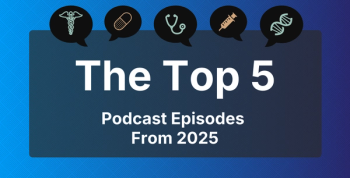
Insurance Status Can Compromise Outcomes in CML
Research presented during a health outcomes session at the recently concluded annual meeting of the American Society of Hematology evaluated the influence of patients’ insurance status on clinical outcomes of CML.
Tyrosine kinase inhibitors (TKIs) have significantly improved outcomes in patients diagnosed with chronic myelogenous leukemia (CML). Despite progress in drug development, however, medication cost and adherence remain barriers to therapeutic effectiveness. Research presented during a health outcomes session at the recently concluded annual meeting of the American Society of Hematology evaluated the influence of patients’ insurance status on clinical outcomes of CML.
“Approved TKIs in the United States cost between $92,000 and $138,000 annually,” said Ashley M. Perry, from the Massachusetts General Hospital, who presented her group’s data. “Cost may be responsible for poor compliance and treatment decisions,” said Perry.
Perry showed data from a paper published in the
For their study, Perry’s group used the Surveillance, Epidemiology, and End Results Program (SEER) database to identify patients over 15 years of age, diagnosed with CML between 2007 and 2012. While patients with documented insurance status at diagnosis were included in the study, the only exclusion criteria was unknown insurance status at diagnosis. A total of 3636 patients were included in the study in the 18 to 64 age group, and 2148 in the over 65 group. The primary outcome was overall survival according to insurance status.
In the 15 to 64 age group, uninsured and Medicaid patients were mostly younger, more often non-white and Hispanic, and were usually unmarried. “Insured people in the 18 to 64 group, on the other hand, were from counties where unemployment rate was lower, fewer people in those counties lived below the poverty line, and fewer had achieved less than a high school education,” Perry said.
In the older age group of 65 years and over, Medicaid patients were more often female, non-white race and Hispanic ethnicity, and were usually unmarried. “In the Medicaid population, those insured were mainly from counties with higher education and fewer living below poverty. We did not find any association with unemployment,” she said.
The data showed that among patients 15 to 64 years old, being uninsured or having Medicaid was associated with worse survival compared with insured patients. For patients over age 65 years, however, there was no difference in 5-year overall survival between patients with Medicaid and those with other insurance.
Mortality was higher among the uninsured patients in the 15 to 64 age group, compared to insured patients, Perry said (Hazard ratio [HR] 2.156, P <.0001) or those on Medicaid (HR, 1.972, P <.0001). Survival was worse with increased age (HR, 1.046 per year, P <.0001), male sex (HR, 1.282, P = .0279) and, being single (HR, 1.883, P <.0001). For patients over age 65 at diagnosis, age was the only factor associated with increased mortality (HR, 1.078 per year, P <.0001).
Perry concluded that CML patients under age 65 without insurance or with Medicaid had significantly worse survival compared to patients with insurance. Marital status and race/ethnicity also impacted survival. Despite highly effective treatments, patients with CML may not have access to or receive appropriate care, which may in part be related to insurance coverage, she concluded.
Pointing to the limitations of retrospective analysis and the SEER database itself, Perry indicated that the database does not include information on patient comorbidities, which could be a drawback of using the database.
Newsletter
Stay ahead of policy, cost, and value—subscribe to AJMC for expert insights at the intersection of clinical care and health economics.








































